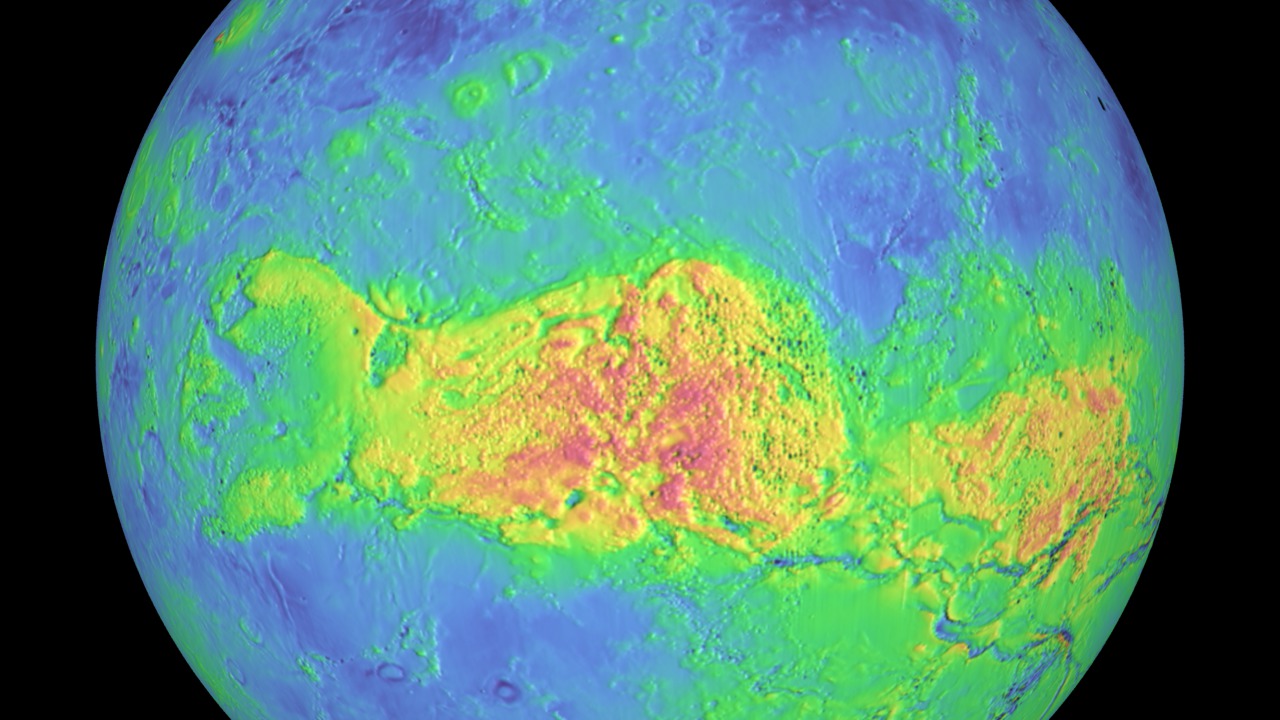Love's Terrain
Over centuries, the planet second closest to the sun was known by many names: Ishtar, Ouaiti, Hesperus, Aphrodite. But just as with the heart's memory one name prevails. In honor of Valentine's Day, homage is paid to the celestial sphere that personifies the mythological goddess of love and beauty—Venus. Of all the planets in our solar system Venus is nearest in size to Earth, though its dry rocky landscape is much hotter. Processed images of the surface using data collected by instruments onboard NASA's Magellan spacecraft reveal vast plains intermixed with sloping highlands and ancient volcanoes. These features are highlighted on a rotating globe of Venus in the color-coded visualization below, where high elevation terrain is shaded yellow and red with low elevation regions tinted blue and green. Black gaps represent areas of the planet uncharted during the first mapping cycle made by Magellan, which surveyed Venus over a period of four years beginning in 1990.

Come take a romantic ride above one of the most heavenly of planets.
Terrestrial features seen in order of appearance: Aphrodite Terra, Ishtar Terra, Beta Regio and Maat Mons.

Aphrodite Terra is the largest highland on Venus and is comparable in size to the continent of Africa.

Second largest is the highland named Ishtar Terra, which boasts Venus's tallest mountains that tower above 36,000 feet.

Ground-based radar on Earth first detected Beta Regio in the 1960s—a volcanic rise in the northern hemisphere that exceeds 13,000 feet.

Scientists speculate whether the 245-mile-wide and roughly 26,000-foot-tall volcano named Maat Mons is still active.

The Venusian atmosphere is composed mostly of carbon dioxide gas and highly reflective clouds of sulfuric acid that cover the planet.

Hot stuff: The temperature on Venus can rise above 867 degrees Fahrenheit.

Except for the moon, Venus is the brightest object in space visible in the night sky.
Credits
Please give credit for this item to:
NASA's Goddard Space Flight Center
Venus night sky photograph courtesy of Joby Minor, NASA/Marshall Space Flight Center
-
Animator
- Ernie Wright (USRA)
-
Producer
- Andrew Freeberg (NASA/GSFC)
-
Scientist
- James Garvin (NASA/GSFC)
-
Writer
- Kayvon Sharghi (USRA)
Release date
This page was originally published on Tuesday, February 14, 2012.
This page was last updated on Wednesday, May 3, 2023 at 1:53 PM EDT.
